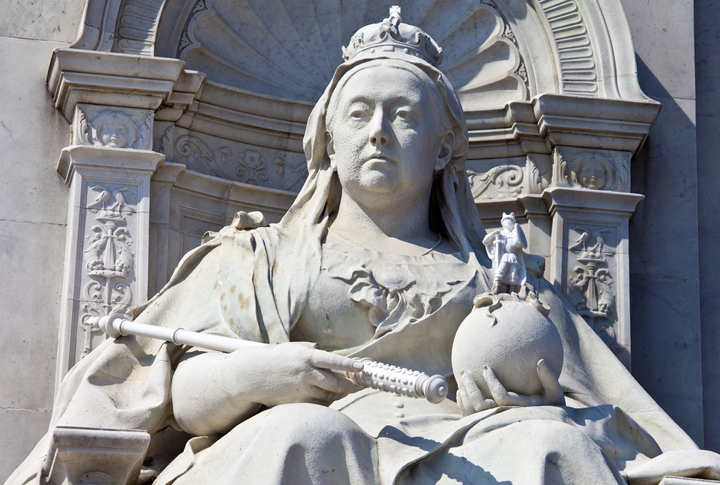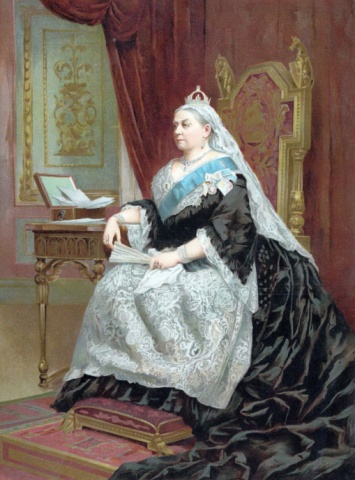This month in history: The wedding of Queen Victoria and Prince Albert
On 10 February 1840, Queen Victoria married Prince Albert in a ceremony in the Chapel Royal of St James’s Palace. As part of our ‘This month in history’ series, we look at the marriage and ceremony, as documented in The Gazette.

When did Queen Victoria meet Prince Albert?
Victoria first met Prince Albert of Saxe-Coburg and Gotha in May 1836, just before the future queen’s 17th birthday. The idea of marriage between the two cousins was mooted long before 1836, and the first meeting of Victoria and Albert had been instigated by their uncle, Leopold I of Belgium, with a view of partnership. Following the meeting, Victoria was especially enthusiastic about Albert, describing him as “extremely handsome” and complimenting the “charm of his countenance is his expression”.
Following the death of her uncle William IV on 20 June 1837, Victoria became Queen at the age of 18 years old. The events were recorded in The London Gazette (Gazette issue 19509).
Prince Albert returned to the United Kingdom to meet Queen Victoria for the second time in October 1839. Their mutual affection blossomed. As a monarch could not traditionally be propose to, Victoria proposed to Albert on 15 October 1839, just five days after he had arrived at Windsor. Victoria's intention to marry was declared formally to the Privy Council on 23 November.
When did Queen Victoria marry Prince Albert?
The wedding of Queen Victoria and Prince Albert took place on 10 February 1840 in a ceremony in the Chapel Royal of St James’s Palace. The events of the day were recorded in a supplement of The London Gazette published on 13 February 1840 (Gazette issue 19824).
The wedding processions
According to The Gazette, Prince Albert began his procession from Buckingham Palace to St James’s Palace “about half past eleven o'clock”. He arrived in the third of three carriages alongside his father, The Duke of Saxe-Coburg and Gotha, and his brother, The Hereditary Prince of Saxe-Coburg and Gotha. Queen Victoria’s procession began shortly after “at twelve o'clock” and she arrived in the final carriage of seven, alongside her mother, the Duchess of Kent, and the Duchess of Sutherland, her close friend and Mistress of the Robes.
The “illustrious Personages, and others composing the Procession” then assembled in the Throne-room before moving in procession to the Chapel Royal. First to enter were the Serjeant Trumpeter and Master of the Ceremonies, Sir Robert Chester. The Bridegroom’s party then entered to the sound of drums and trumpets. “Wearing the Collar of the Order of the Garter”, His Royal Highness “was conducted to the seat provided for him on the left hand of the Altar.”
The Queen similarly entered the Chapel to the sound of drums and trumpets, wearing a white satin dress made by Mary Bettans, with lace designed by William Dyce (she had decided not to wear her crimson velvet robes of state). She was followed by “twelve unmarried Ladies” (her bridesmaids), who carried her 18-foot-long wedding dress train. Queen Victoria’s bridesmaids were:
- Lady Adelaide Paget

- Lady Caroline Amelia Gordon-Lennox
- Lady Sarah Frederica Caroline Villiers
- Lady Elizabeth Anne Georgiana Dorothea Howard
- Laity Frances Elizabeth Cowper
- Lady Ida Harriet Augusta Hay
- Lady Elizabeth West
- Lady Catherine Lucy Wilhelmina Stanhope
- Lady Mary Augusta Frederica Grimston
- Lady Jane Harriet Bouverie
- Lady Eleanora Caroline Paget
- Lady Mary Charlotte Howard
“On reaching the Haut-pas”, Her Majesty took her seat in the Chair of State “on the right of the Altar.”
The wedding ceremony
The service was then commenced by the Lord Archbishop of Canterbury, who was accompanied “on his right His Grace the Lord Archbishop of York, and on his left the Lord Bishop of London, who assisted as Dean of the Chapel Royal.” When the Archbishop of Canterbury read the words: "I pronounce that they be man and wife together," the Park and Tower guns fired.
Following the service, the procession returned from the Chapel Royal to the Throne-room, “where the Registry of the Marriage was attested with the usual formalities.” The bride's mother, The Dowager Duchess of Kent and Strathearn, and other “persons of distinction” then “paid their compliments on the occasion, after which Her Majesty the Queen and His Royal Highness Prince Albert, with the rest of the Royal Family, retired to the Royal Closet.”
According to The Gazette, in the evening “there were very splendid illuminations, and other public demonstrations of joy, in celebration of this most auspicious event, throughout the metropolis.” Victoria recorded how she “never saw such crowds of people… they cheered most enthusiastically” and later stated the event as “the happiest day of my life”.
When did Prince Albert die?
Victoria and Albert’s marriage was a prosperous one. They were deeply in love and gave birth to nine children; four boys and five girls. However, Albert died prematurely from typhoid fever on 14 December 1861 and left Victoria in a state of deep mourning. His funeral took place in St George’s Chapel, Windsor (Gazette issue 22584), while his final resting place was being completed in the mausoleum at Frogmore.
It was not until the 1870s that Victoria - who now wore only black out of respect for her deceased husband - was coaxed out of mourning and back into public life as the popular ‘Queen of the Jubilees’ by her prime minister, Benjamin Disraeli.
When did Queen Victoria die?

Queen Victoria died at Osborne House on the Isle of Wight on Tuesday 22 January 1901 “at half-past six o'clock” in the evening (Gazette issue 27270). She was aged 81 years old, and with a reign of 63 years, seven months and two days, at the time she was the longest-reigning British monarch and the longest-reigning queen regnant in history (an achievement later surpassed by her great-great-granddaughter, Elizabeth II). Upon her death, Victoria’s eldest son, Edward VII, became King.
Prior to her death, Victoria had instructed that her funeral was to be military, befitting a soldier's daughter and the head of the army, and white instead of black. Her funeral took place on Saturday 2 February 1901 in St George's Chapel, Windsor Castle. After two days of lying-in-state, she was interred in the mausoleum at Frogmore beside her husband.
See also
Queen Victoria and Prince Albert's Bicentenary
This month in history: Battle of Trafalgar
This month in history: Edward VIII abdication crisis
This month in history: The funeral of Lord Horatio Nelson
Image: Getty Images
Publication date: 7 February 2020
